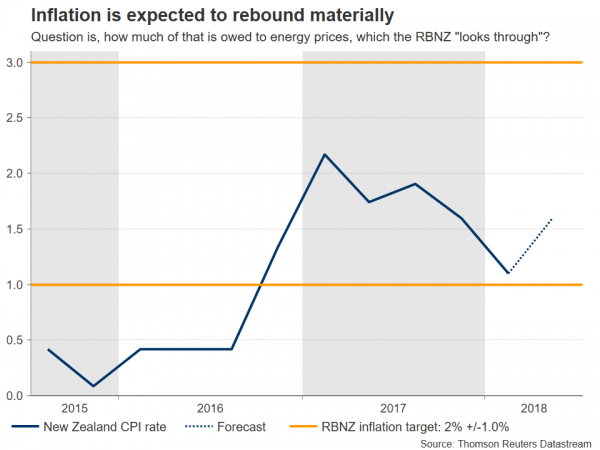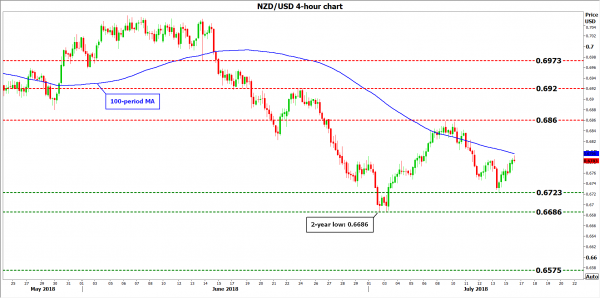New Zealand will see the release of its quarterly inflation data for Q2 on Monday, at 2245 GMT. Consensus expectations are for a solid rebound in the CPI rate, which although may be owed largely to energy effects, would still be slightly higher than what the RBNZ projected in its latest forecasts. Overall, the kiwi has plunged lately, while speculative positioning has reached stretched-short levels, which implies that any positive surprises in economic data moving forth could trigger larger-than-usual positive reactions in the kiwi.
Recent developments have not been encouraging for New Zealand’s economy, leading the nation’s Reserve Bank (RBNZ) to adopt a more cautious policy stance amid a slowdown in economic growth, subdued wage pressures, and a continued deterioration in business confidence. To make matters worse, global trade tensions have intensified further, presenting downside risks for New Zealand’s export-dependent economy. Reflecting these, investors increasingly priced out any expectations for an RBNZ rate increase this year and instead, have now factored in a small probability for a rate cut.
The kiwi has fallen to a two-year low against the dollar as a result, with recent CFTC data pointing to extreme net-short positioning among speculative investors such as hedge funds. In isolation, this suggests that most of the “bad news” may be priced in already, and that the risks surrounding the kiwi moving forward may be asymmetrical. Whereas more negative developments could keep the currency around current low levels, or push it a little lower, any upside surprises in economic data or encouraging news on the trade front could trigger a significant relief rally.
Turning to the upcoming data, forecasts suggest inflationary pressures picked up in the latest quarter. In Q2, the nation’s CPI rate is projected to have risen to 1.6% in yearly terms, from 1.1% in the previous quarter. The RBNZ’s own forecasts back in May anticipated the CPI rate to only reach 1.5% in Q2, so anything above that would likely be pleasant news.
That said, the surge appears to be owed mostly to higher oil prices, and a depreciating New Zealand dollar pushing up the prices of imported goods, as opposed to the healthy demand-driven inflation the RBNZ would like to see. A spike higher in oil prices and a depreciating currency typically boost inflation, but only temporarily (i.e. the effects fade soon). Hence, RBNZ officials could disregard most of the surge as reflecting transitory effects, and focus more on core measures of inflation.
In case of an upside surprise in the CPI rate, some of the bets for rate cuts could fade, helping the kiwi to rebound. Technically, looking at kiwi/dollar, immediate resistance to advances may be found near the 0.6860 area, marked by the peaks of July 9 and 10. Even higher, the June 25 top of 0.6920 would increasingly come into view, with further upside paving the way for a test of 0.6973, defined by the inside swing low on June 13.
On the downside – and in case of a negative CPI surprise that amplifies speculation for a rate cut – further declines in the pair could encounter immediate support near the July 13 low of 0.6723, before the attention turns to the 2-year low of 0.6686 reached on July 3. A downside break could open the way for the 0.6575 zone, defined by the trough of 16 March, 2016.














